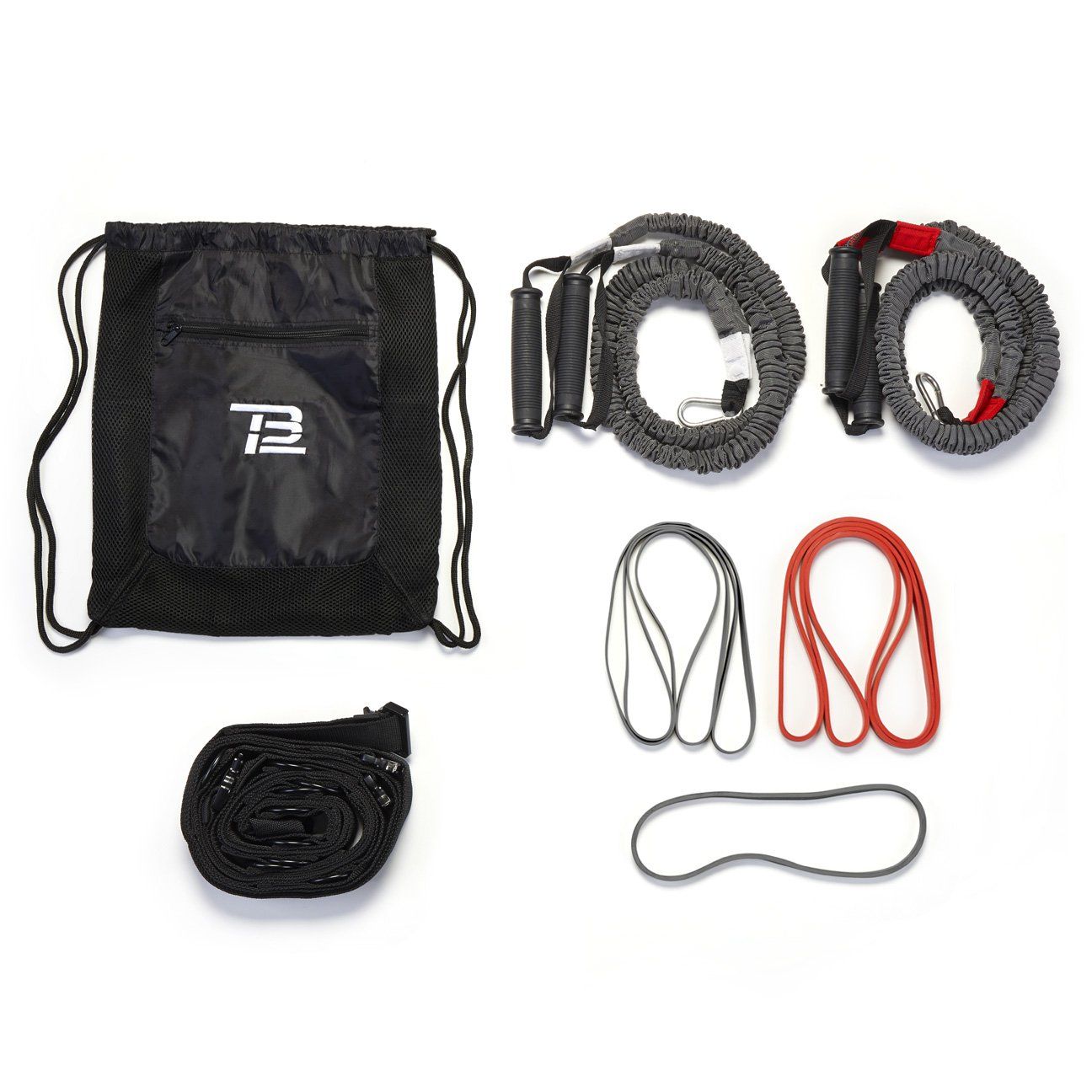One of the finest players in the history of the rough-and-tumble NFL trains has a rigorous fitness regimen that’s built around . . . resistance bands. Yes, really. And no, Tom Brady isn’t nuts.
Look, I get it. Resistance bands aren’t supposed to be the backbone of any fitness routine. Everything you’ve been taught about fitness since, well, ever, has indicated to you that if you want muscle and power and strength, you’re supposed to move large amounts of iron. It’s what you’ve seen from monstrous CrossFitters, and Olympic weightlifters, and most of the rest of the NFL.
Heck, Brady gets it too.“I was like every other American kid,” Brady tells Men’s Health. “I believed if you want to get good, you gotta go squat and bench, and it’s all I ever did.”
Not since he’s started training with Alex Guerrero. For the last several years, Brady’s moved bands ahead of dumbbells, kettlebells and barbells in his fitness pecking order, and both he and Guerrero say they love using bands for functional, athletic moves.
Mainstream media, limited in its fitness understanding and subject to gym stereotypes (ya gotta lift!) assumes it’s some kind of sales gimmick, but, truth be told, resistance bands actually do deliver their share of fitness advantages. That’s why you’ll frequently see me using them in my own workouts my Eb and Swole series, and it’s why resistance bands now hang in almost every CrossFit box in America.
The narrative around resistance bands has changed. Brady gets it. Here’s what you need to know about them, too. (And if you want some bands, grab them here.)

Bands Offer Variable Resistance
Here’s the best thing about resistance bands: They’re offer uniquely inconsistent resistance. At the bottom, when you’re starting a rep with a band, you feel almost know resistance. As you reach the top of a rep, flexing the muscle you’re working the hardest, the band is suddenly at its tensest.
This quality of resistance bands is partly why they’re low-impact; when you’re muscle’s not working, neither are the bands. (Weights, meanwhile, never stop offering resistance, so when your muscles relax, your joints must still bear that load.)
Variable resistance offers unique qualities with banded training, something you’ll see in the resistance band kneeling fly variation below. The core challenge you get with bands doing this fly is impossible to achieve with free weights, or even a standard weighted cable machine.
Bands Allow for Multiple Force Vectors
Traditional weights offer just one direction of resistance. Gravity acts on the weight, sending it back down towards the earth. You either push that load up (as you do in a bench press) or pull it up (as you do in a curl). It aims to push you back down.
Weight machines let you change the direction of that force vector. A cable row machine, for example, pulls you in one direction that’s parallel to the ground. You pull the resistance in the other direction. Still, that’s limiting.
The looped resistance band that’s the standard in CrossFit boxes offers something else, too: Resistance in multiple directions at once. Take this half-iso resistance band straight-arm pulldown.
Here you get to deal with two different forces: You’re pulling that band down and apart simultaneously. That hits your back from multiple angles.
Bands Build Mind-Muscle Connection
A resistance band is at its strongest when it’s at its longest. In several workout contexts, that’s perfect for helping you generate a mind-muscle connection.
That’s key to how resistance bands are used in the second phase of this pushup finisher. Truth be told, the band in this situation doesn’t add much resistance, but it does help give you just enough to have to squeeze your pecs at the finish of each fly rep. And squeezing your pecs is key to getting the most out of flies. It’s also something often missed in standard dumbbell fly reps.
Bands Are Low Impact
And this is sometimes the knock on them. Within gym culture, there remains this idea that if you want to build muscle, it’s got to hurt. Muscle is supposed to be hard and painful to pack on, which is why it’s worth pile-driving your body to, say, squat 300 pounds.
There’s definite value in lifting heavy weights, but resistance bands won’t ever cause your body to deal with that much sheer load and force. Resistance bands aren’t large enough to have that much gravity pressing down on them. The uptick of this: It means your joints don’t get pounded as much. When you have, say, 300 pounds on your back because you’re squatting, it’s placing strain on your entire frame. Depending on your fitness goals, there’s nothing wrong with that. But it’s also not necessarily to absorb such strain in every workout, especially if your goal is winning Super Bowls instead of winning some workout personal record.
It all adds up to a ton of use for bands. No, you don’t need to remove free weights from your routine. But adding resistance bands just might serve you well. Hey, they worked for a certain Tom Brady guy. Are you sold on the concept? Check out this workout Brady and Guerrero use in their training to challenge your body’s pliability.
Source: Read Full Article
